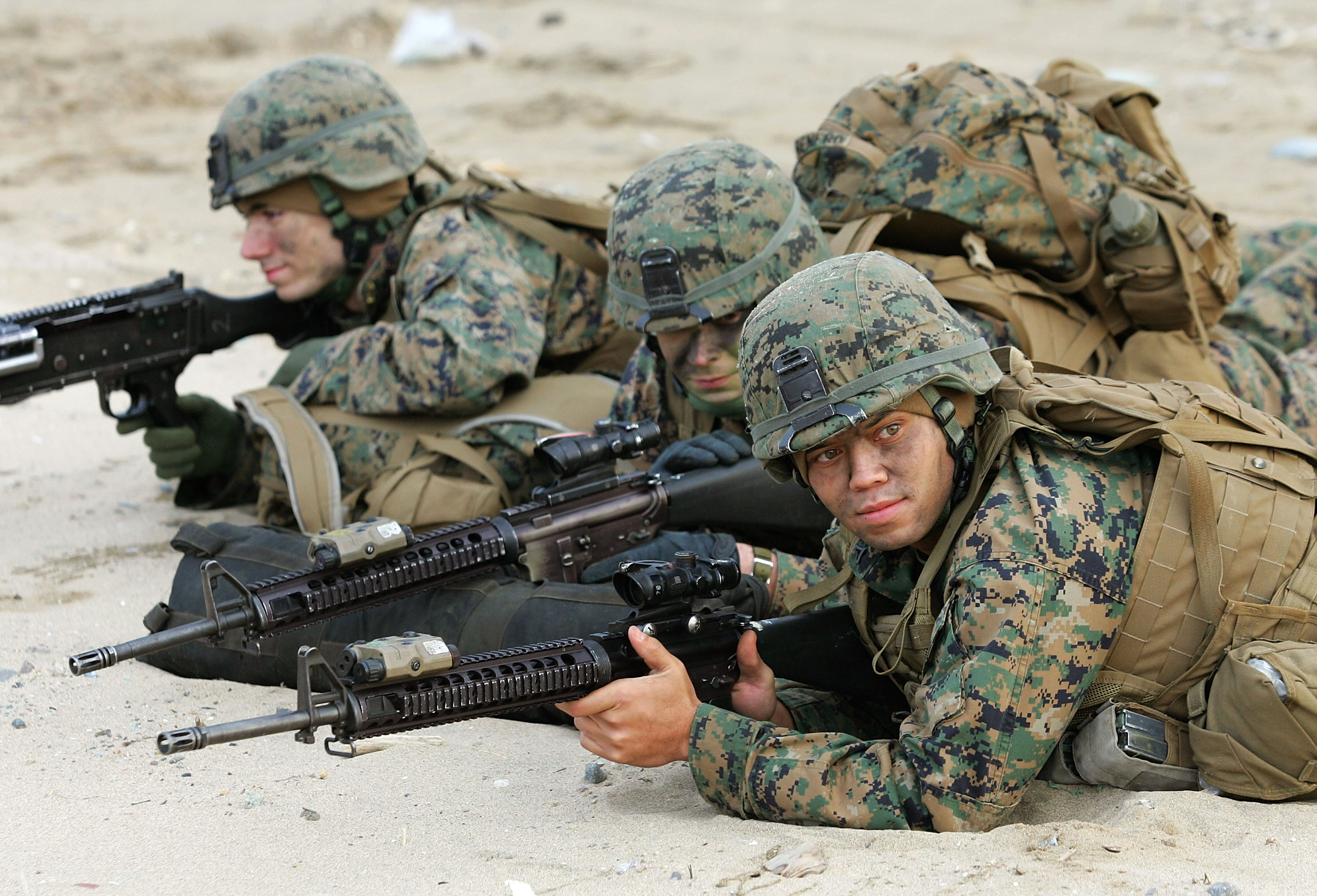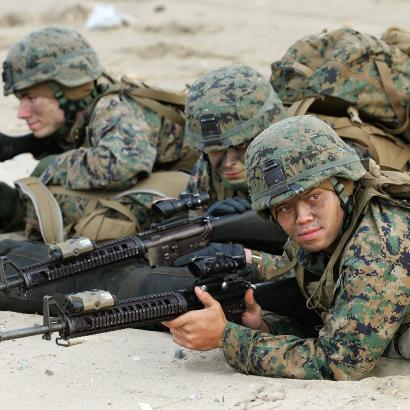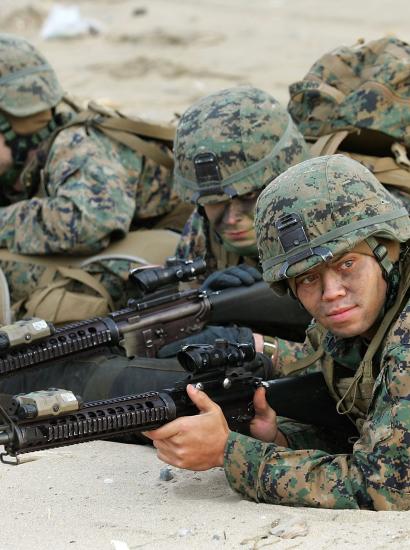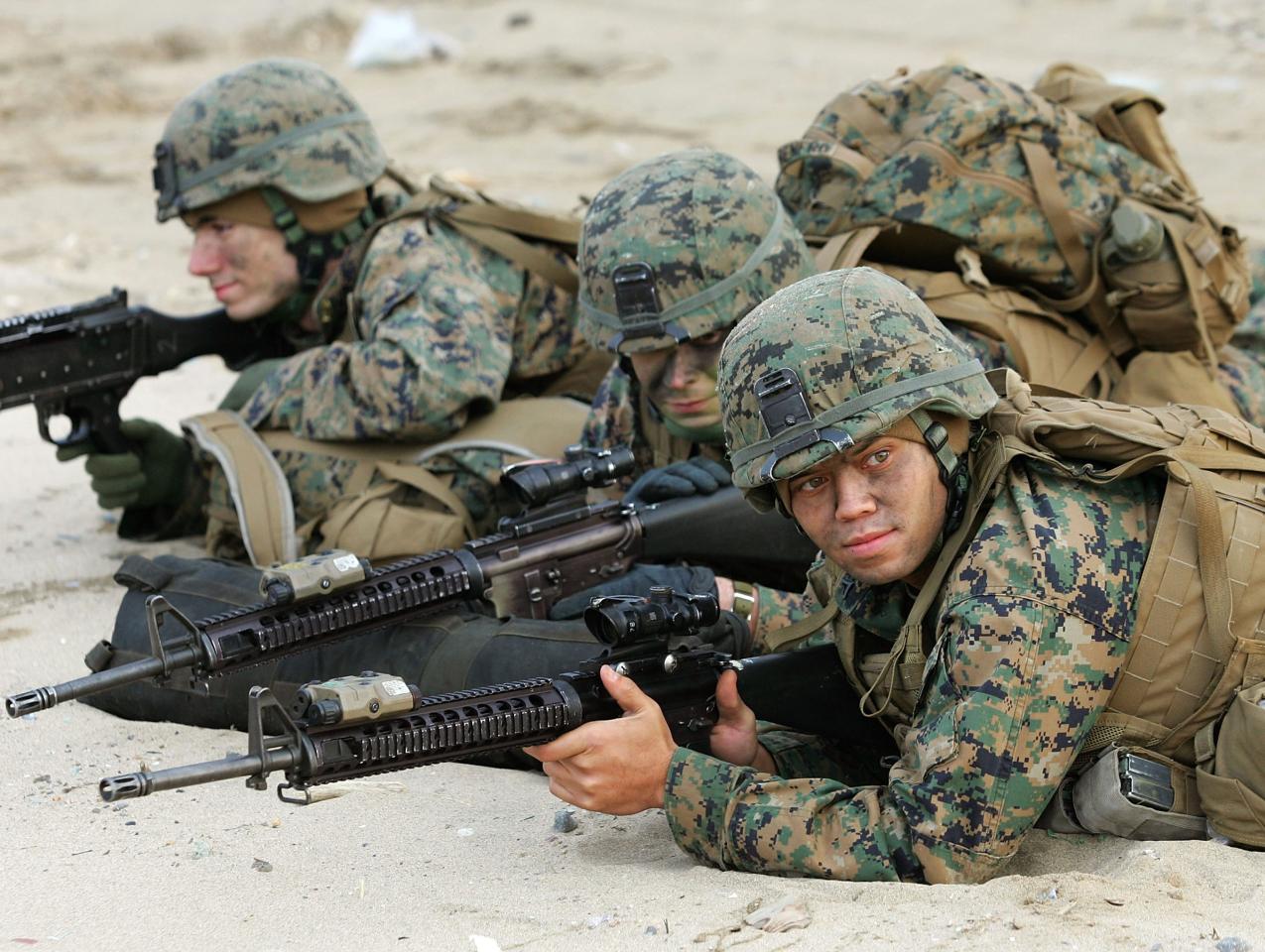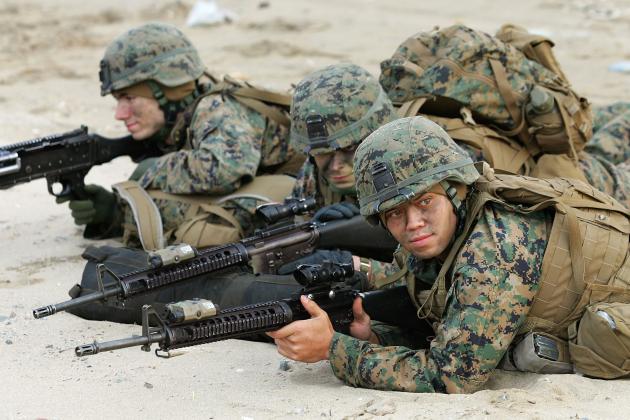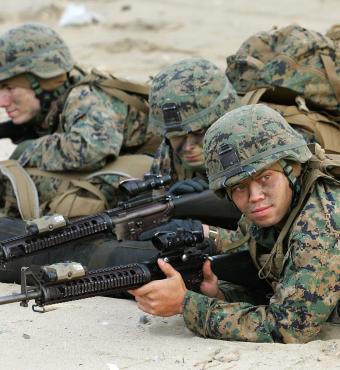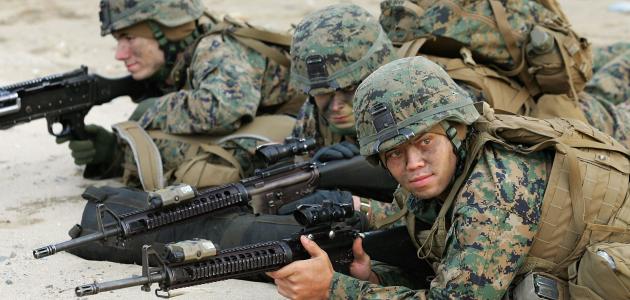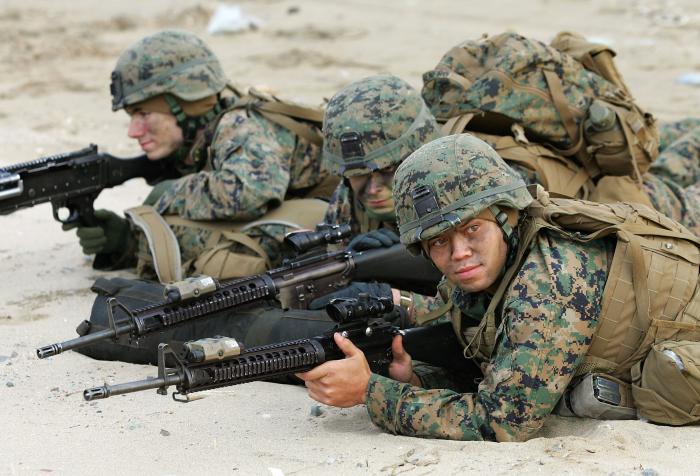- History
- Military
What most often prevents wars from being won? The general tendency is to examine strategy, tactics, technology, weaponry, leadership, training, logistics, and whether the war was a just cause. Rarely is the quality of a country’s citizens and their relationship to their government considered as factors necessary for winning a war.
They should be. Clausewitz recognized these factors in his simplified social trinity of people, army, and government, and their relationship with one another. While each element of the trinity has deep social and structural roots, their relationship with one another is variable. Still, a balance is required. President Eisenhower in his farewell address also recognized the trinity and went a step further when he cautioned that, “Only an alert and knowledgeable citizenry can compel the proper meshing of the huge industrial and military machinery of defense with our peaceful methods and goals, so that security and liberty may prosper together.”
Eisenhower was addressing the conditions inside each of the trinity’s three elements. Clausewitz warned that neglecting the balance among the three would undermine a nation’s ability to fight a sustained war and win. Since the end of World War II, the trinity has become unbalanced. But does the balance required by Clausewitz depend on healthy conditions inside each element? Unhealthy internal conditions may explain why the trinity has become dysfunctional and why the United States now fights but loses wars.
The purpose of each of the elements in Clausewitz’s social trinity is as follows: The government declares war and establishes its objectives; the army fights the war in pursuit of established objectives; and the people are the engines of war and the footbrake that leads to peace. Paradoxically, dysfunctional relationships among these elements give each more room for maneuver and arguably generate endless wars. What happens when disorder appears inside the elements? Checks on government overreach are minimized if Americans neglect their obligations as citizens. A professional army that no longer has a flow of citizen soldiers through its ranks becomes removed from the population it serves. The government, whose citizens are shielded from war can operate with less constraint. Most disturbingly, the army gets to fight wars as it sees fit without checks from the government and the people. An examination of the breakdown inside each element of the trinity follows.
The Government—Unbridled Foreign Policy
The end of World War II radically altered how the United States would view its future security policy. America’s allies in Europe and Asia were struggling to recover from the war’s devastation. The communist threat was growing rapidly. Because of its postwar status, the United States assumed responsibility for leading the defense of Europe and Asia. The small American citizen-soldier army that defended the country for almost two centuries gave way to a new, permanent, military industrial complex needed to fulfill the task of defending the world from the communist juggernaut.
Fortunately, the task of defending the world against communism that began in 1946 ended successfully in 1991 with the collapse of the Soviet Union. How is it that what seemed in 1991 to be a new era of global peace and prosperity quickly slipped back to what many politicians and scholars call a new Cold War with Russia and China? The “end of history” didn’t last long. Part of the answer may be an American foreign policy that substituted hubris for prudence.
Recent national security documents warn that the greatest challenge to U.S. prosperity and security is the threat posed by revisionist powers—specifically Russia and China. What does that mean? Revisionism describes those two nations’ increasing willingness and ability to challenge what they see as U.S. efforts to dominate and enforce the existing international order. Considering the foreign policy of the United States during the past quarter century, it should be no surprise that China seeks to displace the United States in the Indo-Pacific region, impose its economic model, and reorder the region in its favor, while Russia seeks to restore its great power status and control the periphery of its expanded empire.
What generates this revisionism? An unbiased observer cannot rule out that aggressive American policy has something to do with generating this revisionism. Since the end of the Cold War, the United States has invaded or intervened militarily in more than a dozen countries from southeast Europe to the western Pacific, ignoring or dismissing the objections not only of Russia and China, but even of our own allies, and at times discounting the obligations of the UN Charter.
The United States has also interfered in elections in dozens of countries. Given these circumstances, it is not unreasonable that Russia and China, and nations such as Iran and North Korea, would take steps to immunize themselves against what they see as aggressive U.S. intentions. President Trump’s recent refusal to rule out the use of military or economic coercion to force Panama to give up control of the canal that America built more than a century ago, to push Denmark to sell Greenland to the United States, and to make Canada the 51st state only reinforces American foreign policy threats.
Isn’t it entirely possible that the revisionist powers simply seek the military and economic means to defend against what they perceive as a reckless and dangerous ideological threat to their own geostrategic interests? The last Cold War saw America engaged in a fundamentally defensive struggle seeking to contest what we and our allies perceived as a militant ideological threat. The new Cold War may see the shoe on the other foot.
The People—The Want of Obligation
The government’s expansion of its commitment to defend democracy abroad occurred simultaneously with the growing political alienation of its citizens. Historically, it was in the poleis of ancient Greece that the concept of the citizen-soldier was born. It was generally agreed upon that in return for the state providing protection, services, and enforcing the law, citizens accepted their obligation to fight, and if necessary, die for the state. However, the relations between state and citizen diminished as the small, Greek-styled participant communities evolved into megalopolises. The nature of the political community changed.
The modern, vast, liberal state masks its residents from their obligations of active citizenship and patriotic commitment. More and more people seem to drop out of political life. To use Michael Walzer’s term, they become “alienated residents.” They become strangers to the state. Today, these alienated resident strangers have been joined by millions of resident aliens who are also estranged from the state. As a result, fewer men and women feel obligated to become politically engaged, let alone defend the state against foreign aggression.
Despite this slump towards political alienation, a surge of patriotism among Americans has taken place especially when the nation is threatened. Common purpose brings people together. Accordingly, Americans become motivated to embrace their national identity and their responsibilities as citizens. This was certainly the case from the Revolutionary War through the 9/11 attacks on the World Trade Center and the Pentagon. National identity seemed to be in the forefront and other identities moved to the background.
This achievement was a product of the culture established by America’s founding settlers who believed in the rule of law, the rights of individuals, the value of work, the gift of citizenship, and the belief that they had the duty to try to create heaven on earth, a “city on a hill.” This culture attracted millions of immigrants who wanted to become Americans. Jean de Crèvecoeur’s 1782Letters from an American Farmer perfectly described the American melting pot: “He is an American, who leaving behind him all his ancient prejudices and manners, receives new ones from the new mode of life he has embraced, the new government he obeys, and the new rank he holds. … Here individuals of all nations are melted into a new race of men.”
By the 1960s, the national story of an American people united by a creed of freedom and equality, and by language, territorial integrity, civic traditions, national symbols such as the National Anthem, the Flag, and the Pledge of Allegiance, was under attack. As national purpose faded, tribalism grew. The ideological zeal of socialism was fading, but its proponents on the left sought an alternative.
The Left found its answer in identity politics. Identity politics grew out of anti-colonialism. Marx’s class struggle was reformulated into an ethno-racial struggle, an endless competition between colonizer and colonized, victimizer and victim, oppressor and oppressed. The new multiculturalist Left was driven to expose the alleged power relations that subordinated and exploited minorities. It was a war against America and liberal democracy as much as Nazism and Stalinism ever were.
Samuel Huntington illustrated this shift from unity to disunity in the poetry recited at two presidential inaugurations. At President Kennedy’s 1961 inauguration, Robert Frost hailed the “heroic deeds” of America’s founding and the creation of “a new order for the ages.” Three short decades later at President Clinton’s inauguration, Maya Angelou had a different message. She identified twenty-seven racial, religious, and ethnic groups and denounced the immoral repression they suffered because of America’s militant profiteering and its eternal link to “brutishness.” Frost celebrated the melting pot that made everyone Americans, while Angelou saw the manifestation of American identity as evil and a threat to the real identities of subnational groups.
The latest effort to divide the American people is critical race theory. It is a cheap repackaging of the Left’s previous attempts to regenerate the failed socialist class struggle by again using race and class to create a revolutionary coalition of the dispossessed. Sadly, in American universities, corporate human relations departments, and government agencies, euphemisms such as “equity,” “social justice,” “diversity and inclusion,” and “culturally responsive teaching” have become part of the organizational culture. But these non-threatening terms should never be confused with the American principles of equality and fairness. Fortunately, critical race theory has lost much of its authority. Still, the divisiveness it generated has hurt how Americans view each other, their institutions, and their obligations as citizens. In 1992, the historian Arthur Schlesinger, Jr. warned that the “cult of ethnicity,” if pushed too far, may endanger the unity of society. The evidence suggests disunity is here.
The Army—A Distinct Sub-Culture or a Reflection of the People?
There are at least two reinforcing trajectories undermining the health and readiness of the U.S. military. The first is cutting off the average citizen from the nation’s military and creating a warrior caste that carries the burden of fighting America’s wars for the remainder of its citizens. The second trajectory divides the warrior caste by prioritizing radical progressive policies that have been imposed by the very leaders charged with ensuring military readiness. This trajectory may be changing.
First, since the military became an all-volunteer force in 1973, more than 80 percent of its personnel have come from families where at least one family member has previously served. For nearly 30 percent, it was a parent. This is striking considering that less than one percent of the population serves in the military. The U.S. military is becoming a family business and as a result is isolated from most of the American people.
Adding to familial isolation is a geographic component. Today’s members of the military come primarily from the South and from communities outside military bases. The South produces 20 percent more recruits than would be expected while the Northeast produces 20 percent fewer. This was not the case prior to 1973. Military service was spread evenly, geographically, because of the draft. The small number of counties that currently produce recruits is unsustainable. Recent recruiting shortfalls bear this out.
There is also strong evidence that Americans with military connections, whether serving themselves or related to those serving, have different views from their civilian counterparts on issues ranging from domestic politics to national security. In the Northeast and on the West coast, regions defined by liberal politics, people are suspicious of the military. In schools, military recruiters are minimally allowed to interact with students and only because it is against the law to stop them completely.
The growing divide between citizens and soldiers is harmful. Reliance on a shrinking pool of recruits tends to produce a sense of isolation for both citizens and soldiers. More troubling, the warrior caste begins to show contempt for the larger society that they are responsible for protecting.
Second, up until the inauguration of President Trump in 2025, a radical, progressive social agenda had been imposed on the military by elected and appointed leaders who either had little understanding of the purpose, character, and traditions of the military, or didn’t care. Much of the progressive agenda is based on the idea that America is systemically racist. Accordingly, military personnel were required to attend indoctrination programs dividing service members along racial and gender lines, the opposite of what is necessary to build cohesive teams based on common values.
Treatment based on group identity promotes discrimination. Yet in 2021, President Biden signed an executive order requiring all organizations in the military to create Diversity, Equity, and Inclusion (DEI) offices. The overall goal, Biden said, was “advancing equity for all,” using the progressive’s euphemism for achieving desired outcomes through discriminatory policies.
Progressive ideology undermines military readiness in various ways. First, it undermines cohesiveness by stressing differences based on race, ethnicity, and gender. Second, it undermines leadership authority by introducing questions about whether promotion is based on merit or quota requirements. And third, it leads to military personnel serving in jobs and units for which they are not fully capable of serving.
One example of how progressive ideology damaged readiness is related to standards and physical fitness, hallmarks of the U.S. military. When former Defense Secretary Ashton Carter opened all combat jobs in the U.S. military to women, he also committed to “gender-neutral standards” to ensure that female servicemembers could meet the demanding rigors of combat. The Army diligently worked for a decade to create a gender-neutral fitness test. However, after finding that women were not scoring up to standard, and under fierce pressure from advocacy groups, the Army threw out the test. The old dual standard requiring less from women was resurrected even though the rigors of combat do not have a dual standard. Readiness standards were subordinated to a progressive social agenda.
Despite the new Trump administration’s quick and direct executive orders to terminate everything associated with progressive ideology, it will not spontaneously end. Wokeness in the military has become ingrained. The people who benefited from progressivism and those hurt by it will continue to divide rather than unite the military for many years.
Summary and Conclusions
The security of the United States is based more on the quality of the citizens it produces and their relationship to their government than to any technological or material factors. The importance of these two factors does not eliminate the more quantifiable requirements for the quality and quantity of weapons, personnel, munitions, advanced technologies, and mobility platforms. But it is worth remembering that strong actors, measured in quantifiable terms, have routinely been defeated by weaker actors throughout history.
Clausewitz’s social trinity cannot produce victory if the elements of the trinity are dysfunctional. A comprehensive action plan to fix what is broken inside each of the elements is beyond the scope of this essay. It is also likely beyond the scope of what a liberal democracy can reasonably do. Draconian measures can make the cure worse than the disease. Nevertheless, there are two specific things that if restored, will generate positive changes inside the trinity’s three elements. The first task is to reestablish the spirit of citizenship among Americans. The second is to reconnect citizens and their military. Where to begin.
First, fix the nation’s education system. Schools have a profound impact on teaching future citizens. Schools have traditionally been instruments of assimilation and keys to forming a sense of American identity. Unfortunately, America’s education system has most recently been ground zero for rejecting what historically has brought Americans together. Too much attention placed on cultural and ethnic differences has nourished prejudices and stirred antagonisms. Students are alienated from the state and each other.
On the surface, it seems that academic institutions are immovable. Schools have always been battlegrounds for debates over beliefs and values. This is a good thing until it goes too far. Fortunately, most Americans, the silent majority that include students and teachers, recognize the voguish nonsense that has been going on in schools. It is also fortunate that most students and teachers are followers, not leaders who possess strong convictions. Self-interest prevails. Having spent a good portion of my life in the academic world, the words “courageous and politically committed” would rarely describe a teacher, especially at the university level.
This means that a modest critical mass of right-minded teacher-administrators could change the orientation of education in America. Government incentives and disincentives can also shape what goes on in classrooms. Additionally, enabling parents who pay taxes and tuition to have a greater role in their children’s education will empower the silent majority. Finally, there is no reason to have tension between the organic, rich diversity that exists in America and the common culture necessary to hold American society together. Educators who won’t see this should be removed from the education system.
Second, reinstate the draft. Mobilizing the national will for war is essential for seeing a conflict through to victory, especially for protracted wars. Unfortunately, the American people were mostly eliminated from the conduct of war when the draft ended in 1973. Clausewitz’s trinity was reduced to two elements; its logic was broken. The end of the draft resulted in the loss of ownership of war. Even people who identified as patriots had no real obligations to the government or the military. Eliminating the draft was a political winner and its weaknesses are hidden as long as wars remain limited. But what if the United States had to fight a major war? We see the human toll in Ukraine. We also see that better technology is not a panacea for success nor a substitute for boots on the ground. Would an American president order conscription or accept defeat, or simply not fight, even if fighting was necessary for the security of the nation? That so much of America’s military effort relies on so small a share of its citizenry should be worrisome by itself.
These are difficult questions. The reality is that the pure military value of a draft in terms of greater manpower is questionable. Additionally, the economic argument against a draft is powerful. And there is the case that compulsory military service eliminates the concept of personal freedom. But these issues are secondary to harnessing the will of the American people to sustain a war and both empower and constrain the government. Americans should have skin in the game.
Just as important, service to one’s nation is a fundamental civic responsibility. There is a feeling of collective identity that is created when everyone is eligible for the draft. A military draft requires the government to be more accountable for its actions. More families become connected to the daily operations of their government. Family and friends of a draftee are likely to be more attentive when viewing current events. Citizens will want to learn more about the threats that their government faces. These interactions keep elected officials accountable for their choices. And finally, when draftees return home, they will be better citizens. Alternative forms of national service will be necessary for some people.
It is not an understatement to say that engaged citizens are necessary for a democratic republic to function properly. It is also reasonable to suggest that contemporary government disfunction is connected to a critical mass of disengaged citizens. The culture that had kept American society together has deteriorated. Reorienting the education system and resurrecting the draft, notwithstanding current recruitment challenges, offer paths towards developing better citizens who are engaged in the country’s future. These tasks are simple in concept but difficult to implement. Yet nothing worthwhile is easy.







